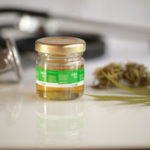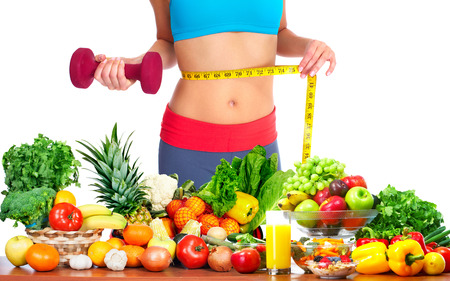Often, when we work out or are an athlete performing at intense levels, we wonder how our diet affects our performance. Following are a few tips.
Simple Steps for Determining Diet Intake vs Performance Output
1. Everyone needs to know how to ready food labels so that he or she knows the number of grams of each food type, i.e., carbohydrates, fats, and proteins being ingested.
2. Calculate the number of calories needed for yourself on days when you do not exercise (see our diet and nutrition section). This is termed the REE or resting energy expenditure. As a rule of thumb, you can obtain a ball-park figure by multiplying body weight by 10 and adding 200. Let us use a 120 pound person for an example, REE = 120 pound x 10 + 200 = 1400 kcal energy required per day on days he or she does not exercise. This is just to maintain current body weight.
3. For exercise days, add the number of calories expended for the exercise to those determined from your REE in step 2 above (see “comparison” in the diet and nutrition section).
4. Adjust as needed. If you are slowly losing weight and you do not desire to do this, ingest extra calories on a daily basis. If you are gaining weight, ingest fewer daily calories.
Doing this will ensure that your diet matches your activity level. Thus, you will be the best you can be. For those who are involved in more intense activities, competitive fitness, or professional sports, please read the following section.
Performance and Calories
I am often asked if one can perform well on a low calorie diet with the primary goal of the individual being to lose weight. The answer is no.
Your performance in any physical activity is directly linked to the energy your body can supply to muscles and cells. What happens when we cannot supply the energy we need to our cells for the activity we are doing? If the activity is done for only 2-3 hours, you will promote fat loss after exercise if this is an occasional event. However, if this is an everyday occurrence, the final answer is that protein will be used for the energy source and muscle mass will be cannibalized. And, it’s well known that the more lean muscle one has, the better able he or she is to control weight and possible obesity.
Again, the key is to balance input of food energy with output of energy used.
For example, muscle fatigue such as “hitting the wall” in running, generally occurs when the body’s internal carbohydrate stores are depleted and there is a shift towards fat metabolism as the energy source for muscles. At this point, maximum energy output is generally limited to approximately 50% VO2 max. (VO2 max. is the region in which oxygen consumption plateaus or increases only slightly with additional increases in exercise intensity, i.e., this is the maximal oxygen consumption). Logically we might assume that if adequate carbohydrates are ingested to offset those expended, that we can maintain our pace indefinitely. Unfortunately this is not the case. Athletes and fitness buffs with low muscle glycogen stores, but high blood glucose levels still experience fatigue at some point, even though the time to onset of fatigue may be delayed by ingesting carbohydrate supplements. We are not sure why this occurs, but it could be related to physical changes in muscle cells since this type of fatigue is more common in the untrained person or athlete.
Fats provide over 50% of the Calories expended during moderate exercise at less than 50% VO2 max., even when adequate carbohydrates (glycogen) are available. As the level of exercise increases towards 100% VO2 max., the proportion of the total energy expenditures replaced by fats decreases. Also, in maximum performance events, where metabolism becomes anaerobic (greater than 100% VO2 max.), fat metabolism ceases and only carbohydrates are available as an energy source; sprinting is a good example of this.
Protein is a maintenance material used to repair muscle (and other) cell injuries – including the micro-trauma that occurs in training.
When designing a nutritional program to supplement the body’s energy stores for an athletic event, the rate of digestion and absorption of foods must be taken into account. The time required for the stomach to start the digestive process, empty its contents into the small intestine, and have the foods absorbed into the bloodstream will directly affect how quickly any food energy will be available for muscles to provide the supplemental energy for exercise.
Four factors influence this digestive process, over which you have some control.
- Solid vs liquid – liquids are expelled or emptied from the stomach more quickly than solids.
- Fat content in foods – fat slows the digestive process and delays the availability of any Calories in the food to the muscles. This is why you don’t want to consume fats until at least two hours after exercise.
- Sugars – a sugar content of more than 10%, especially in liquids, will slow stomach emptying. However, the use of complex carbohydrates, due to a decreased osmotic effect, will offset this somewhat and offers an alternative strategy to maximize Caloric intake to offset the metabolic needs of exercise.
- Physical activity level – digestion is slowed by any vigorous activity, usually starting at 70% VO2 max. Except in short, all out events such as sprinting, this is generally not an issue. Also, in events such as running, the additional component of mechanical stimulation of abdominal contents from the sport itself slows digestive processes and tract functioning.
The consequences of this are that: 1) The optimal food for a rapid, high energy boost during sustained, fast paced exercises such as running or cycling would be a semi-liquid or liquid carbohydrate with little or no fat. 2) If you are an endurance athletes competing at a lower VO2 max., ingesting a complex carbohydrate with fat added for improved taste (generally in a solid form), will slow emptying from the stomach and prolong absorption for a greater period of time.






